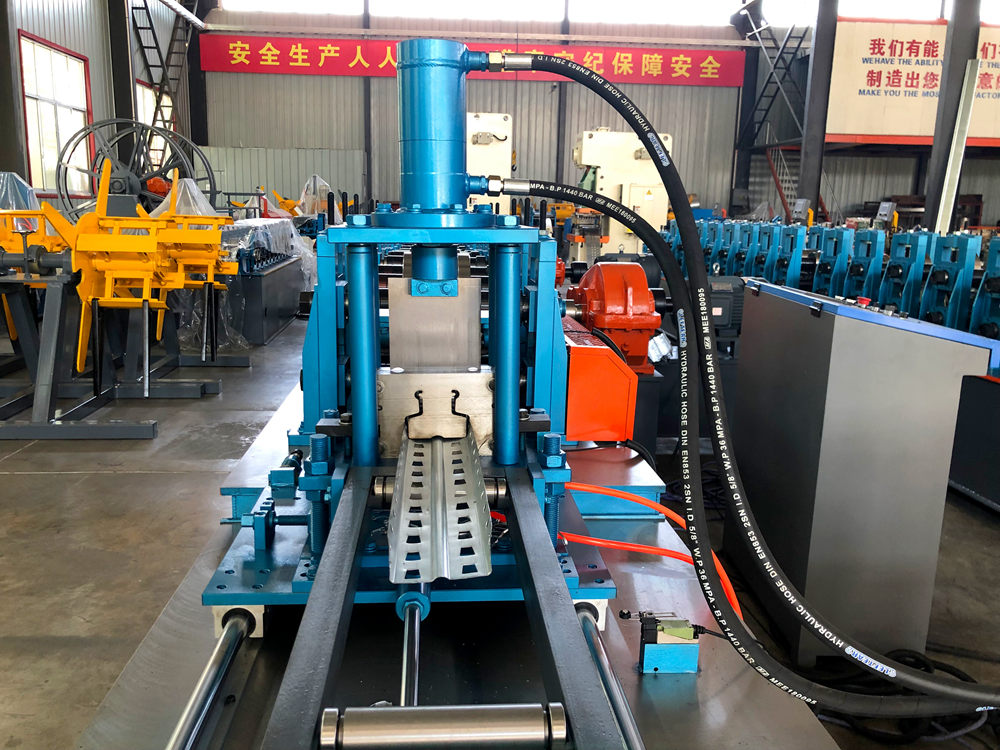
Understanding the Automatic C/Z Purlin Forming Machine Features and Benefits
The construction industry has witnessed significant advancements in technology, and one of the notable innovations is the development of automatic C/Z purlin forming machines. These machines play a crucial role in the efficient production of steel purlins, which are essential components in the construction of buildings, warehouses, and industrial facilities. This article delves into the features and benefits of the automatic C/Z purlin forming machine, highlighting its importance in modern construction practices.
What is a Purlin?
Before we explore the forming machine, it's essential to understand what a purlin is. A purlin is a horizontal structural member in a roof, used to support the load of the roofing material. Purlins can be made from several materials, with steel being the most common due to its strength and durability. The two main types of purlins are C purlins and Z purlins, named for their respective shapes. Each serves specific purposes in construction, and the automatic forming machine is designed to produce both types efficiently.
Features of the Automatic C/Z Purlin Forming Machine
1. Automatic Operation One of the key features of these machines is their automation. They are equipped with advanced control systems that enable automatic production, significantly reducing manual labor and the likelihood of human error. This enhances overall efficiency and productivity.
2. High Precision Automatic C/Z purlin forming machines are designed with precision engineering. They incorporate advanced cutting and bending technologies that ensure each purlin is manufactured to exact specifications, resulting in a consistent product quality that meets the stringent standards of the construction industry.
3. Versatility These machines can easily switch between producing C and Z purlins, making them highly versatile. This flexibility allows manufacturers to respond to varying project requirements and market demands without needing multiple machines.
4. Speed and Efficiency Automatic forming machines operate at high speeds, enabling the rapid production of purlins. This efficiency not only shortens production cycles but also reduces operational costs, making it a cost-effective solution for manufacturers.

5. User-friendly Interface Modern machines are designed with intuitive touch screens and user-friendly interfaces that make operation straightforward and accessible, even for individuals with limited technical expertise.
Benefits of Using an Automatic C/Z Purlin Forming Machine
1. Increased Productivity The automation and efficiency of these machines result in higher production rates. Manufacturers can produce more purlins in a shorter time, allowing them to meet tight project deadlines and respond quickly to demand.
2. Cost Savings With reduced labor costs due to automation and the ability to produce purlins quickly, businesses can significantly lower their overall production costs. This financial benefit can be a game-changer, especially for small and medium-sized enterprises.
3. Improved Quality The precision of automated machines ensures that every purlin produced meets strict quality standards. This is vital in construction, where the integrity of structural components is critical to safety and longevity.
4. Less Waste Automatic forming machines are designed for efficiency, which means less material waste during the production process. This not only benefits the environment but also helps manufacturers save money on raw materials.
5. Customization Options Many automatic C/Z purlin forming machines offer customization options where manufacturers can adjust dimensions and specifications to meet the unique requirements of different projects, providing greater flexibility in production.
Conclusion
The automatic C/Z purlin forming machine represents a significant advancement in the construction industry, combining efficiency, precision, and versatility. As construction demands continue to evolve, investing in such innovative technology can provide manufacturers with a competitive edge. By streamlining operations and enhancing product quality, these machines are not just tools of production; they are integral to the future of construction. Adopting such technology is not merely an option but a necessity for businesses aiming to thrive in a fast-paced and ever-changing market.